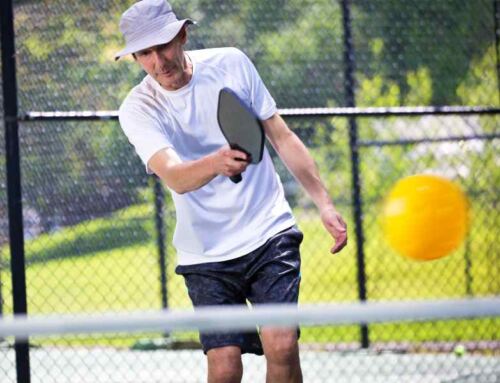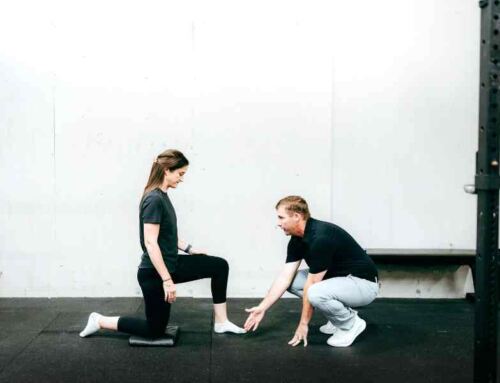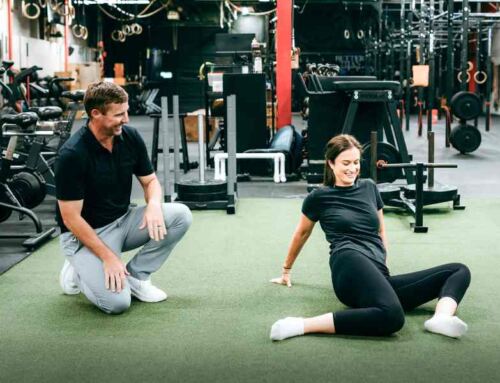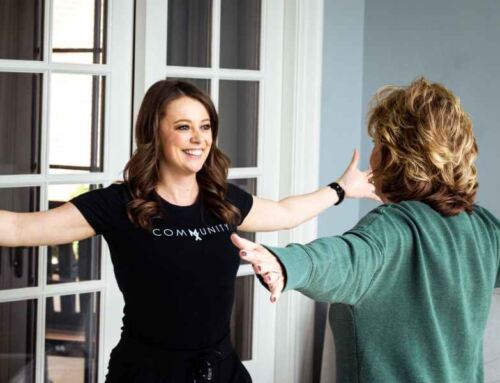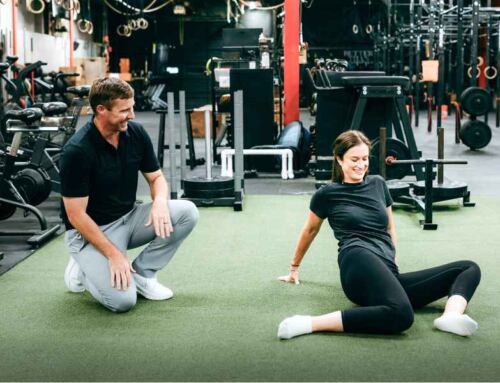Strong Knees, Strong Games: Knee Injury Prevention in Female Athletes
Did you know that female athletes are 2-8 times more likely to suffer a non-contact ACL injury than their male counterparts? This alarming statistic highlights the unique challenges women face when it comes to knee health. While sports participation offers countless benefits and is continually growing in popularity and attendance, it’s crucial to understand and address the factors that put female athletes at increased risk of knee injuries.
In this article I’ll briefly dive into some common knee injuries and their causes in female athletes, provide practical prevention tips, and discuss the latest evidence-based injury rehabilitation techniques. By empowering yourself with knowledge, you can take proactive steps to protect your knees and stay in the game.
The Unique Challenges for Female Athletes
Several factors contribute to the higher incidence of knee injuries in female athletes, but there are 3 anatomical differences that are unique:
- Women tend to have a wider pelvis which alters the alignment of the lower limbs. This can lead to increased knee valgus (knock-knee) and increased stress on the ACL. Also, the Q angle, the angle between the femur and tibia, is generally larger in women, which can also contribute to knee instability.
- Hormonal fluctuations, particularly fluctuations of estrogen levels during the menstrual cycle, can influence ligament laxity. Higher estrogen levels may lead to increased ligament laxity and a higher risk of injury.
- Muscle strength imbalances also play a significant role. While there are variations, women generally have less muscle mass compared to men, specifically in their quads and hamstrings, which can impact knee stability and shock absorption.
These factors combined contribute to a higher risk of knee injuries in female athletes. However, it’s essential to note that these are general trends and individual variations exist.
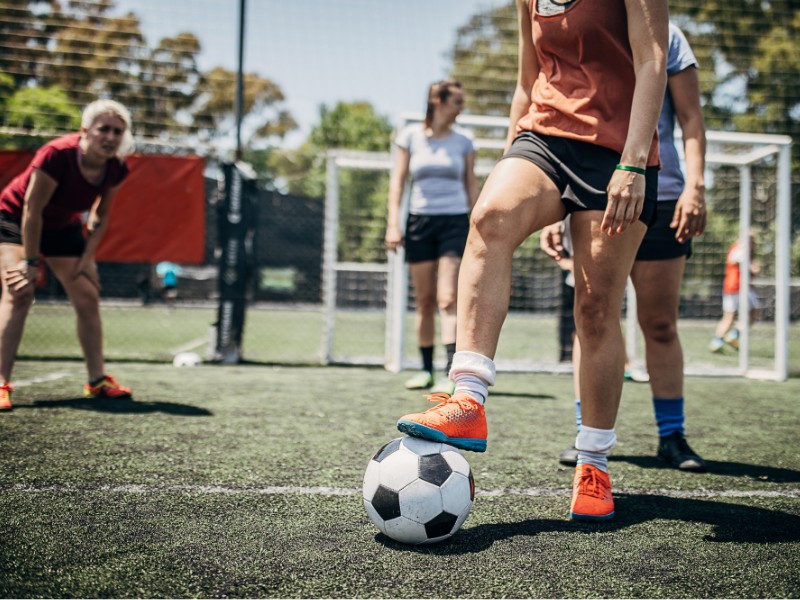
Common Knee Injuries in Female Athletes
Understanding the types of knee injuries common in female athletes is essential for prevention. Some of the most prevalent include:
ACL (Anterior Cruciate Ligament) tears
This ligament provides stability to the knee joint, and injuries often occur during sudden stops, cutting, or jumping. Some interesting data to consider:
- High school girls are nearly 4 times as likely to sustain an ACL injury from playing soccer and basketball compared to softball or volleyball
- The highest rate of injuries are seen following non-contact vs player-player contact.
|
ACL Injuries Sustained Between Sports (1) |
||
| FEMALE | MALE | |
| Soccer | 53.2% | 17.2% |
| Basketball | 26.5% | 5.5% |
| Softball/Baseball | 11.4% | 2% |
| Volleyball | 8.8% | — |
| Football | — | 71.2% |
| Wrestling | — | 4.1% |
Meniscus tears
The meniscus is cartilage that acts as a shock absorber in the knee. Tears can result from twisting or rotational forces.
The highest risk for injury is seen in girls’ soccer and basketball, with a higher rate of injuries seen following player-player contact vs non-contact (3).
Patellofemoral Pain Syndrome (aka “Runner’s Knee”)
This condition involves pain around the kneecap, often caused by overuse or improper biomechanics.
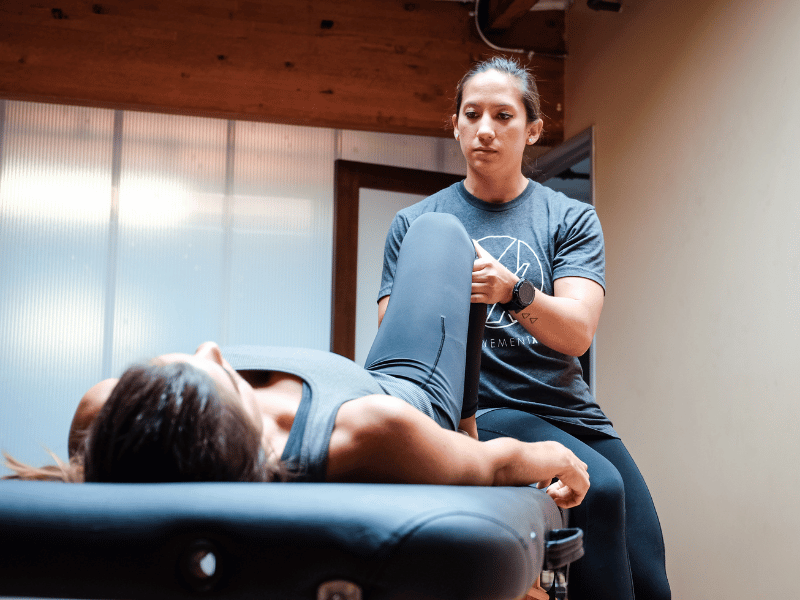
Prevention Tips
Because anatomical and hormonal factors are non-modifiable, most prevention programs have focused on modifiable neuromuscular and biomechanical risk factors (2, 4). Specifically, neuromuscular prevention programs reduced the incidence of non-contact ACL injury in youth female athletes by 64% (4). While no method can guarantee complete injury prevention, implementing these strategies can significantly reduce your risk:
- Warm-up and cool-down: Proper warm-up increases blood flow and prepares your muscles for activity, while a cool-down helps prevent stiffness and soreness.
- Strength and plyometric training: Exercise programs should include at least three different exercise types, especially plyometric and strengthening exercises, and include feedback or emphasis on technique. These exercises should be related to the high-risk movements within each specific sport.
- Flexibility and mobility: Regular stretching and mobility exercises improve joint range of motion and reduce muscle tightness.
- Proper technique: Mastering proper form in your sport is essential to reduce stress on the knees. Surrounding yourself with a great coach/team/trainer is just as important as having a great health care team!
- Rest and recovery: Allowing your body adequate time to recover prevents overuse injuries.
- Cross-training: Incorporating low-impact activities into your routine helps reduce stress on the knees and prevent overuse from repetitive movements.
Prevention In Action
FIFA 11+ is a comprehensive warm-up program designed specifically to prevent soccer injuries. Developed by FIFA’s medical research center (F-MARC) in collaboration with international experts, it’s aimed at reducing the occurrence of common soccer injuries, particularly knee injuries. Recent statistics have shown compliance with this program reduced knee injuries by 30% (5). All it takes is two 20 minute sessions per week.
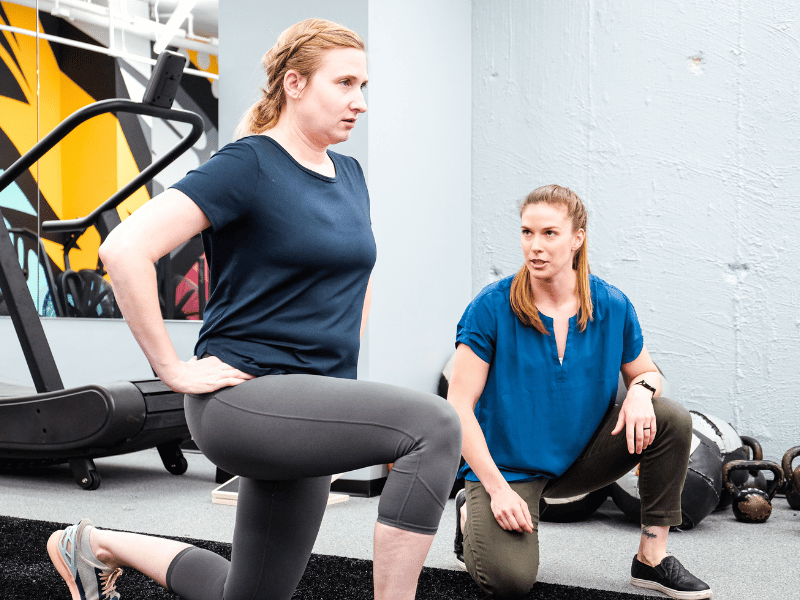
When Injury Strikes
If you experience knee pain or sustain an injury, it’s crucial to seek evaluation by a qualified healthcare provider like a MovementX physical therapist. Early intervention can prevent further damage and expedite recovery. Whether you need surgery or not, physical therapy plays a vital role in the rehabilitation process by addressing pain, swelling, restoring range of motion, and rebuilding strength that is specific to you and your unique goals.
Key components of knee rehabilitation include:
- Pain management: Reducing pain and inflammation is essential for initiating movement and encouraging early mobilization/weight bearing. PEACE & LOVE is the new acronym to follow for the early phase of injury management.
- Restoring range of motion: Gentle exercises help regain full knee flexion and extension. And it’s not as simple as “within normal limits”- we want it equal to your non-injured side since that is YOUR normal.
- Strengthening: Progressive strengthening exercises to rebuild muscle strength and stability, specifically targeting an ideal 3:2 quadriceps and hamstring strength ratio.
- Proprioception and balance training: Improving coordination and balance is crucial for returning to sport safely.
- Return to sport programs: Gradual progression of activities, incorporating sport-specific drills and functional movements is a must. This includes change of direction exposure, speed generation, and multi-tasking capabilities per your sport demands.
The implementation and progression of these components will vary depending on mechanism of injury, specific tissues impacted, severity of trauma, non-surgical approach, surgical approach, and expected sport demands. Your doctor and physical therapist (and in some cases, your sport training staff) will work together with you to establish the best course of action for rehabilitation and return to sport.
By understanding the factors contributing to knee injuries in female athletes and implementing effective prevention strategies, athletes can significantly reduce their risk and enjoy a long and fulfilling athletic career. Remember, early intervention and comprehensive rehabilitation are essential for optimal recovery from knee injuries.
Share your tips and experiences with knee injury prevention in the comments below.
Empowering other female athletes is key to creating a safer and more supportive sporting environment.
References
- Joseph AM, Collins CL, Henke NM, Yard EE, Fields SK, Comstock RD. A multisport epidemiologic comparison of anterior cruciate ligament injuries in high school athletics. J Athl Train. 2013 Nov-Dec;48(6):810-7. doi: 10.4085/1062-6050-48.6.03. Epub 2013 Oct 23. PMID: 24143905; PMCID: PMC3867093.
- Bedi, A., et al. (2016). The effects of neuromuscular training programs on the prevention of ACL injuries: A systematic review and meta-analysis. American Journal of Sports Medicine, 44(11), 2796-2806.
- Mitchell J, Graham W, Best TM, Collins C, Currie DW, Comstock RD, et al. Epidemiology of meniscal injuries in US high school athletes between 2007 and 2013. Knee Surg Sports Traumatol Arthrosc. 2016;24(3):715–722. doi: 10.1007/s00167-015-3814-2.
- Mattu AT, Ghali B, Linton V, Zheng A, Pike I. Prevention of Non-Contact Anterior Cruciate Ligament Injuries among Youth Female Athletes: An Umbrella Review. Int J Environ Res Public Health. 2022 Apr 12;19(8):4648. doi: 10.3390/ijerph19084648. PMID: 35457516; PMCID: PMC9027388.
- Sadigursky D, Braid JA, De Lira DNL, Machado BAB, Carneiro RJF, Colavolpe PO. The FIFA 11+ injury prevention program for soccer players: a systematic review. BMC Sports Sci Med Rehabil. 2017 Nov 28;9:18. doi: 10.1186/s13102-017-0083-z. PMID: 29209504; PMCID: PMC5704377.


